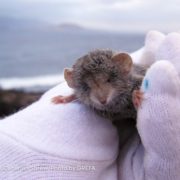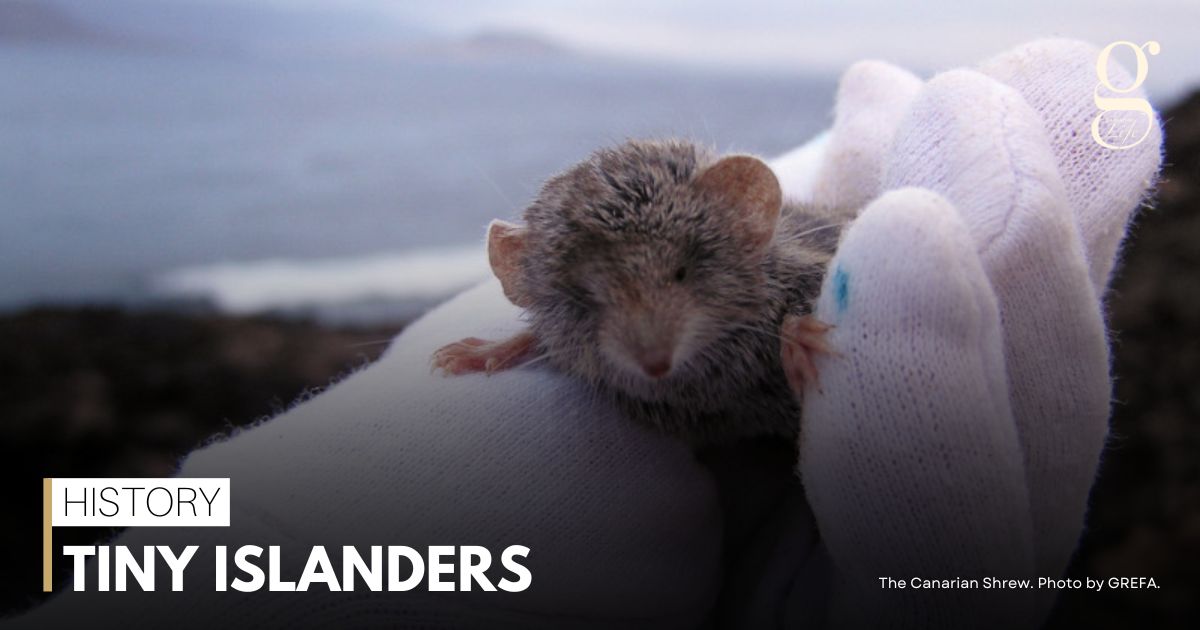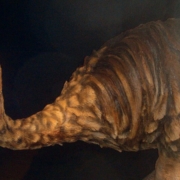There are few wild mammals on the Canary Islands, and only one land-based species that is found nowhere else on earth. Here’s the history of the Canarian Shrew (Crocidura canariensis).
It wasn’t always so. Although they have never been attached to the mainland of Africa, other land-based mammals once lived on the islands. They included species of giant rats on Tenerife and Gran Canaria, and the tiny lava mouse on Lanzarote and Fuerteventura, which lived in cracks in the volcanic lava fields.
Like the flightless birds whose fossils have been found on Lanzarote, it is a mystery how they arrived here, although some experts favour the theory that large rafts of vegetation containing the animals may have drifted over from the mainland at some point over the millions of years the islands have existed.
However, the arrival of humans over 600 years ago was bad news for native species of rodents that had existed on the islands for millions of years. Humans brought their own species of rats and mice, which rapidly established themselves and outcompeted the local variants. Both species of Canarian giant rat and the little lava mouse ceased to exist after the 15th century.
But the Canarian shrew survived. One of the smallest mammals in the world, weighing around 7g when adult, this tiny, long-nosed creature lives a secretive, nocturnal life, meaning that it is rarely seen.
Shrews are not rodents and are more closely related to moles than mice and rats. They have an incredibly rapid metabolism that means that they must eat almost constantly while awake, and they live on small insects, larva, and snails.
On Lanzarote, they are mostly reported in the malpais (badlands) of the north, which is also the least-developed part of the island.
The Canarian shrew is only found on the Eastern Canary Islands of Fuerteventura and Lanzarote, and the small islands of Montaña Clara and Lobos. There are variations within the species – some populations are lighter than others – and the shrew is classed as an endangered species.
That endangered status is understandable when you consider the challenges the shrew has had to overcome. Apart from natural predators such as hawks and shrikes, the shrew has had to face introduced rats, mice, dogs, and cats. Its habitat has also been affected by construction and littering – shrews sometimes enter cans or bottles and cannot escape.
Recently, GREFA (Group for Rehabilitation of Autoctonous Fauna) is working to monitor and raise consciousness of the Canarian shrew. Claudia Schuster of GREFA advises people to “Control cats, dispose of bottles, cans and other containers correctly, avoid the use of insecticides, demand measures that help shrews across roads and oppose the increasing human occupation of the natural habitats of this unique species”.
SHREW LORE
In Britain, this voracious appetite gave the animal a reputation for fierceness and led to the word “shrew” also being used as an insulting for nagging women.
In Spain, however, the term “thinking about the shrews” (pensar en las musarañas) means that you are distracted by trivial matters. This originates from the days when farm labourers might sit around watching wildlife at harvest time.
For regular updates, pictures and videos of Lanzarote be sure to like and follow our Facebook page “Gazette Life Lanzarote”.











